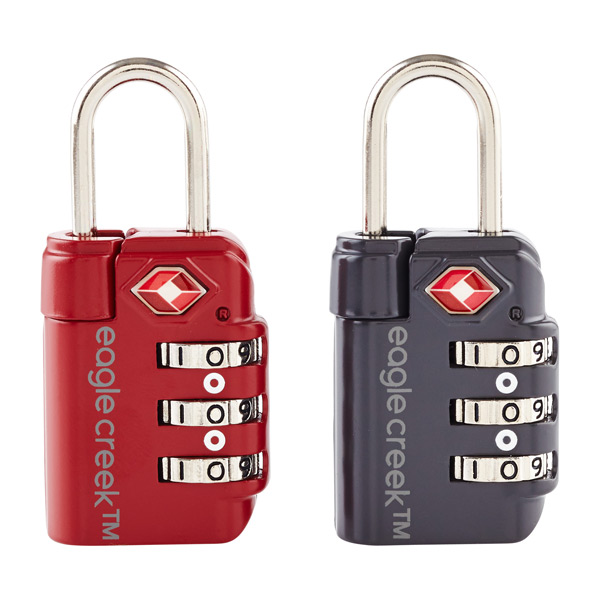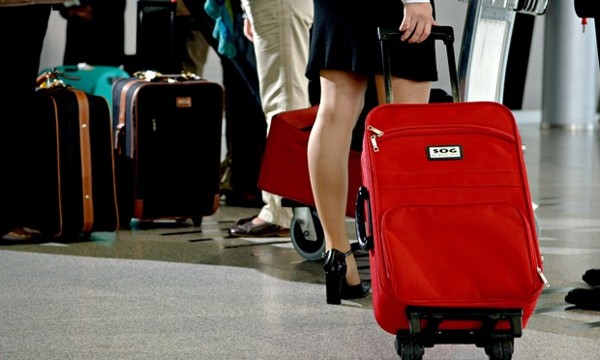
The Free Thought Project has reported that the Washington Post has erroneously published an article that included a photograph of the Transport and Security Administration (TSA) master keys.
It is said, after the Post published the photograph, a group of lock-picking and security aficionados download it and printed the master keys using a 3-D printer.

They later uploaded a video that depicted a printed key opening a TSA approved luggage lock. The leaked master keys can open every type of TSA recognized locks, including Master Lock, Samsonite, and American Tourister.
A Montreal-based Unix administrator named Bernard Bolduc, also downloaded the files and printed one of the TSA’s keys using his PrintrBot Simple Metal printer. The key immediately opened a TSA recognized lock on Bolduc’s luggage. He posted a video on Twitter proving that the 3-D printed key worked on TSA-approved locks.
OMG, it’s actually working!!! pic.twitter.com/rotJPJqjTg
— Bernard Bolduc (@bernard) September 9, 2015
The article partially responsible for this major security breach, was titled “The secret life of baggage: Where does your luggage go at the airport?” It mistakenly included a photo of the TSA’s master luggage keys. By simply looking at the photo, lock-pickers figured out how to replicate the keys using 3-D printers. Although The Post has removed the photo from its site, the picture has gone viral on many social media platforms.
The security breach was made worse when a Github user named Xylitol, published a set of CAD files that allow anyone with a 3-D printer to replicate the precisely measured set of TSA master keys.
“Honestly I wasn’t expecting this to work, even though I tried to be as accurate as possible from the pictures. I did this for fun and don’t even have a TSA-approved lock to test. But if someone reported it that my 3D models are working, well, that’s cool, and it shows…how a simple picture of a set of keys can compromise a whole system,” Xylitol wrote in an email to WIRED.

According to researchers, keys can be decoded and replicated from photographs that have been taken as far as 195ft away. The photo in The Washington Post article, is said to have depicted a close-up shot of the TSA’s master keys.
In the U.S., it is said the TSA requires access to luggage without passengers being present. The agency has therefore accepted certain locks which they can open and relock. The luggage locks accepted by the TSA can be opened by authorized personnel of the agency using universal master keys.
Although the TSA is directly responsible for the current security breach, many have also pointed fingers at The Washington Post for publishing the controversial photo.

According to security experts, by allowing the newspaper to photograph the master keys, the TSA have added yet another mistake to their series of security failures. In June, undercover Homeland Security agents successfully smuggled dozens of fake explosives and banned weapons through airport security checkpoints. TSA Acting Administrator, Melvin Carraway, was demoted for not being on top of the job.
An undercover Department of Homeland Security agent also successfully smuggled a fake bomb through a metal detector at New Jersey’s Newark Liberty Airport. in 2013. Again, the TSA screeners were not able to detect the mock explosive strapped to his body.
You want to support Anonymous Independent & Investigative News? Please, follow us on Twitter: Follow @AnonymousNewsHQ
This Article (Beware: Washington Post Gives Out Transport and Security Administration Master Luggage Keys) is free and open source. You have permission to republish this article under a Creative Commons license with attribution to the author and AnonHQ.com





LUL. That is funny! A transgender woman got held up at the body scanner because there was something suspicious about her…BUT some guy with a (fake) bomb can just waltz right thru!!!
Smuggling *fake* explosives through a machine that is designed to detect only real explosives. Why would a machine mark a fake bomb as a threat???? Do you understand how many bags would go to inspection if these machines flagged bags that simply looked like a bomb? Do you want even longer delays???? If you want to test a bomb detection scanner… Use real explosive material and not fake stuff.
Next you need to know how scanners actually work in the US. First the bag enters the machine then the machine scans it. The machine then uses a highly accurate algorithm to determine if there is a threat. If it sees it. It flags that bag and the image is sent to a remote viewing station where a TSA person must look at the image of the bag. The TSA person will see the highlighted areas that are thought to be a threat. Then the screener manually chooses to either clear or mark bag as suspect. If they fail to mark it either way by default the bag goes down to inspection as an auto suspected bag where it will be manually searched. If cleared it will go to the plane. The big issue is the human screener not the machines. Now you know how it works. If there are no live explosives and only simulants then why would the machine that is looking for real stuff mark it as a threat?!? If the machine doesn’t mark it then a screener never sees it period. So yes a fake bomb would make it to the plane and a fake bomb is not a threat to anyone so people should stop worrying about these so called fake bombs making it to the plane.
>Frost
Nice post and absolutely spot on!
The detectors don’t care whether it’s real or not, they are looking at density and material (organic, inorganic, whatever). fake explosives look the same on a detector, in that they have similar density and organic signature to the real thing.
And in the same way a fake gun made of gunmetal still registers teh same as a real gun.
In June, undercover Homeland Security agents successfully smuggled dozens of fake explosives and banned weapons through airport security checkpoints
The way im reading it, guns were real